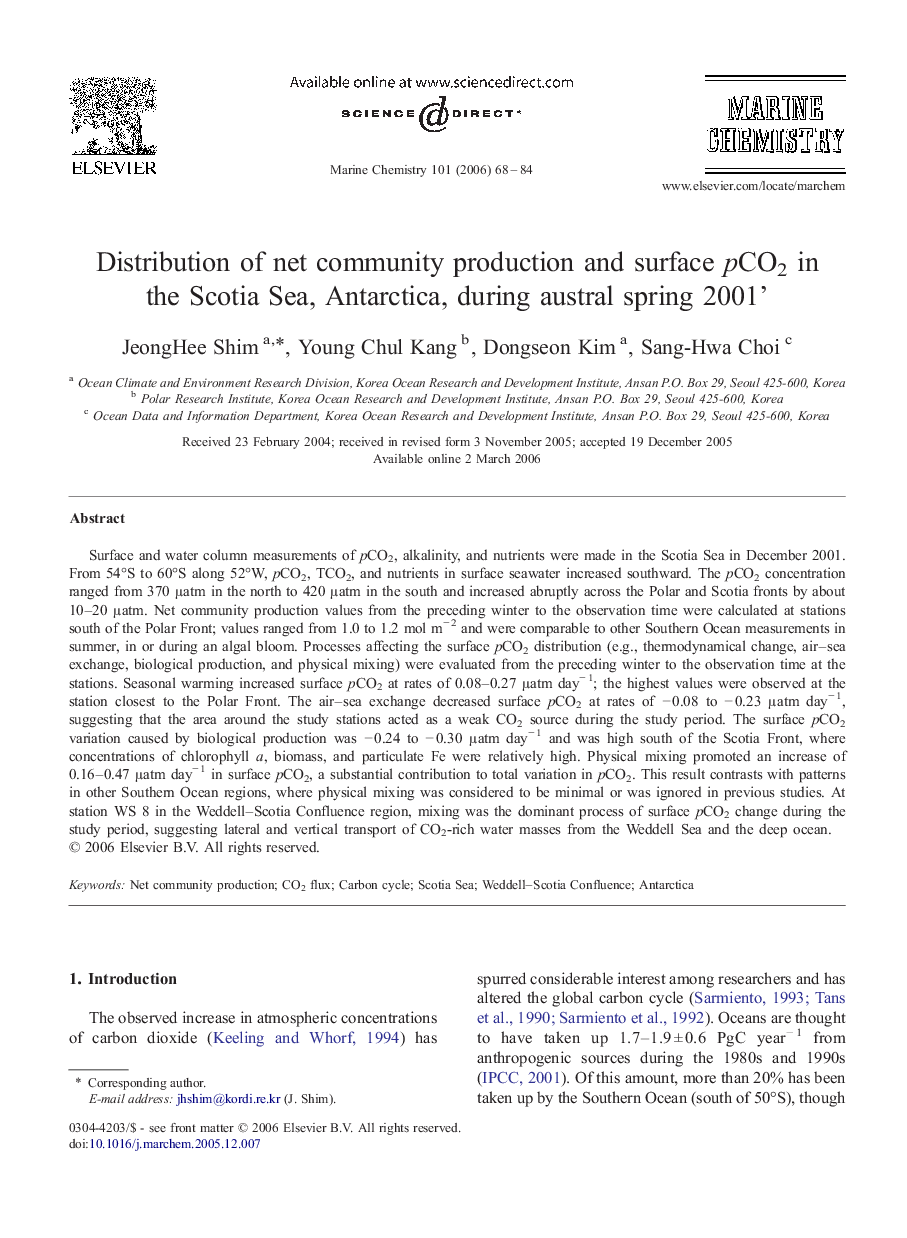| کد مقاله | کد نشریه | سال انتشار | مقاله انگلیسی | نسخه تمام متن |
|---|---|---|---|---|
| 1263372 | 1496737 | 2006 | 17 صفحه PDF | دانلود رایگان |
عنوان انگلیسی مقاله ISI
Distribution of net community production and surface pCO2 in the Scotia Sea, Antarctica, during austral spring 2001'
دانلود مقاله + سفارش ترجمه
دانلود مقاله ISI انگلیسی
رایگان برای ایرانیان
کلمات کلیدی
موضوعات مرتبط
مهندسی و علوم پایه
شیمی
شیمی (عمومی)
پیش نمایش صفحه اول مقاله

چکیده انگلیسی
Surface and water column measurements of pCO2, alkalinity, and nutrients were made in the Scotia Sea in December 2001. From 54°S to 60°S along 52°W, pCO2, TCO2, and nutrients in surface seawater increased southward. The pCO2 concentration ranged from 370 μatm in the north to 420 μatm in the south and increased abruptly across the Polar and Scotia fronts by about 10-20 μatm. Net community production values from the preceding winter to the observation time were calculated at stations south of the Polar Front; values ranged from 1.0 to 1.2 mol mâ 2 and were comparable to other Southern Ocean measurements in summer, in or during an algal bloom. Processes affecting the surface pCO2 distribution (e.g., thermodynamical change, air-sea exchange, biological production, and physical mixing) were evaluated from the preceding winter to the observation time at the stations. Seasonal warming increased surface pCO2 at rates of 0.08-0.27 μatm dayâ 1; the highest values were observed at the station closest to the Polar Front. The air-sea exchange decreased surface pCO2 at rates of â 0.08 to â 0.23 μatm dayâ 1, suggesting that the area around the study stations acted as a weak CO2 source during the study period. The surface pCO2 variation caused by biological production was â 0.24 to â 0.30 μatm dayâ 1 and was high south of the Scotia Front, where concentrations of chlorophyll a, biomass, and particulate Fe were relatively high. Physical mixing promoted an increase of 0.16-0.47 μatm dayâ 1 in surface pCO2, a substantial contribution to total variation in pCO2. This result contrasts with patterns in other Southern Ocean regions, where physical mixing was considered to be minimal or was ignored in previous studies. At station WS 8 in the Weddell-Scotia Confluence region, mixing was the dominant process of surface pCO2 change during the study period, suggesting lateral and vertical transport of CO2-rich water masses from the Weddell Sea and the deep ocean.
ناشر
Database: Elsevier - ScienceDirect (ساینس دایرکت)
Journal: Marine Chemistry - Volume 101, Issues 1â2, 7 September 2006, Pages 68-84
Journal: Marine Chemistry - Volume 101, Issues 1â2, 7 September 2006, Pages 68-84
نویسندگان
JeongHee Shim, Young Chul Kang, Dongseon Kim, Sang-Hwa Choi,